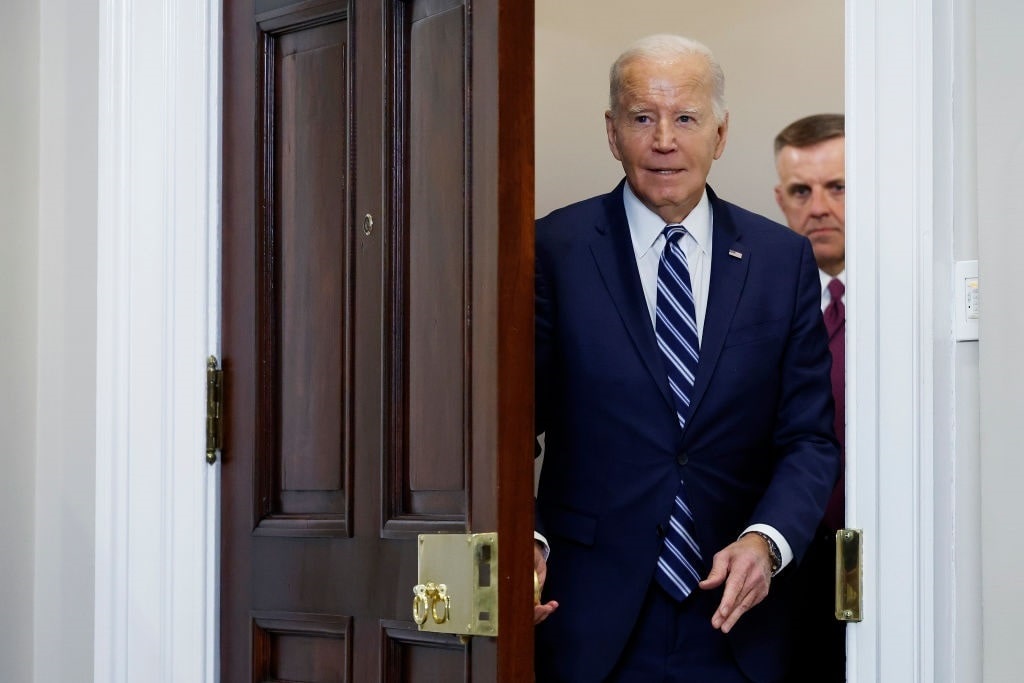Feeding the military-industrial complex is expensive.
Annual US military spending is about $1 trillion. The foreign policy bills are piling up as the nation becomes involved in new conflicts, including the latest clash with the Iran-backed Houthi rebels in Yemen. With Washington prepared to write blank checks for geopolitical developments worldwide, be it Ukraine or Taiwan, determining how much these events are costing taxpayers has become an impossible feat. Whatever the final tally is, the conclusion is almost certainly that the United States cannot afford these fights.
Foreign Policy for the Houthis
When the current administration decided to respond to the Houthis’ drone and ballistic missile attacks in the Red Sea, it was estimated that each retaliatory munition would cost as much as $4.3 million. Operation Prosperity Guardian, the US-led military multinational coalition launched in response to the barrage of attacks on commercial shipping vessels in the region in December 2023, is ostensibly an open-ended affair. As a result, taxpayers should expect to be billed a hefty sum. In fact, various projections suggest that the last two months of fighting have cost more than $100 million in munitions alone, meaning that it will likely top $1 billion sometime this spring.

So, for example, experts told the Washington Times that America is likely using two types of weapons: The SM-2 missile interceptors and the Evolved Seasparrow Missiles. The former costs about $2.1 million, while the latter has a price tag of $1.8 million.
Has this been a solid investment so far? The Houthis have insisted they will not relent, and they have backed up their words with action. On February 16, the rebels fired missiles at a British crude oil tanker headed for India. Additionally, Iran’s Revolutionary Guard plans to offer target information to help the Houthis. With this level of support in its back pocket, a Houthi military spokesperson stated that the group will not halt its attacks until Israel stops the war in Gaza.
Taxpayers can anticipate this will be another prolonged foreign policy affair. But this is not all.
The War in Ukraine
The White House has also demanded more funding for the US proxy war in Eastern Europe. After some Republican pushback, the current administration doubled down on its requests, purporting that the death of Alexei Navalny, Russian President Vladimir Putin’s political opponent, should be sufficient reasoning to keep sending money and weapons to Kyiv.

Joe Biden (Photo by Anna Moneymaker/Getty Images)
President Joe Biden has urged GOP lawmakers to support more funding. “There’s so much on the line,” Biden told reporters near his home in Rehoboth Beach, Delaware. “The idea that now we’re running out of ammunition — to walk away, I find it absurd. I find it unethical. So I’m going to fight to get them the ammunition they need.”
The war in Ukraine has fractured the Republican Party, with America First conservatives refusing to fall in line and more establishment wing of the party claiming that it is a moral imperative for the world’s superpower to defend Ukraine in perpetuity. Many in the GOP are outraged by the infinite funding for the war efforts while Congress fails to pass a standalone bill for the border crisis at home. Others argue that it is unclear how much the Ukraine-Russia conflict has cost taxpayers up to this point. The numbers vary, though the most cited figure is $113 billion.
Israel and Taiwan
Over the last several decades, the US has granted Israel more than $260 billion – with some estimates suggesting this figure is closer to $318 billion. Since the tragic October 7 terrorist attacks, Washington has pledged about $14.3 billion in military assistance to Israel. This is in addition to the roughly $3 billion the US extends to the country each year as part of the Foreign Military Financing (FMF) program. The situation in the Middle East is less controversial in America than the Ukraine conflict as the Republican and Democratic leaderships have been quick to provide the Israeli government with anything it needs.
Over the past year, the US has provided Taiwan with hundreds of millions of dollars in military aid. This included a $345 million weapons aid package in July 2023 and another $80 million to acquire US-made military equipment. Ultimately, Washington is quietly arming Taiwan to the teeth.
The Cost of Control
It is not cheap to be the world’s policeman. As the United States extends its influence to every crevice on the planet, searches for new military adventures, and pays for other nations’ security, taxpayers will know that politicians’ foreign policy consists of borrowing, printing, and taxing their way to maintain the status quo. The national debt is well above $34 trillion, the budget deficit is poised to be around $1.8 trillion this fiscal year, interest payments are inching toward $1 trillion, and America’s unfunded liabilities and expenditures are approximately $200 trillion. This is in addition to the inflationary pressures that the American people face daily.

